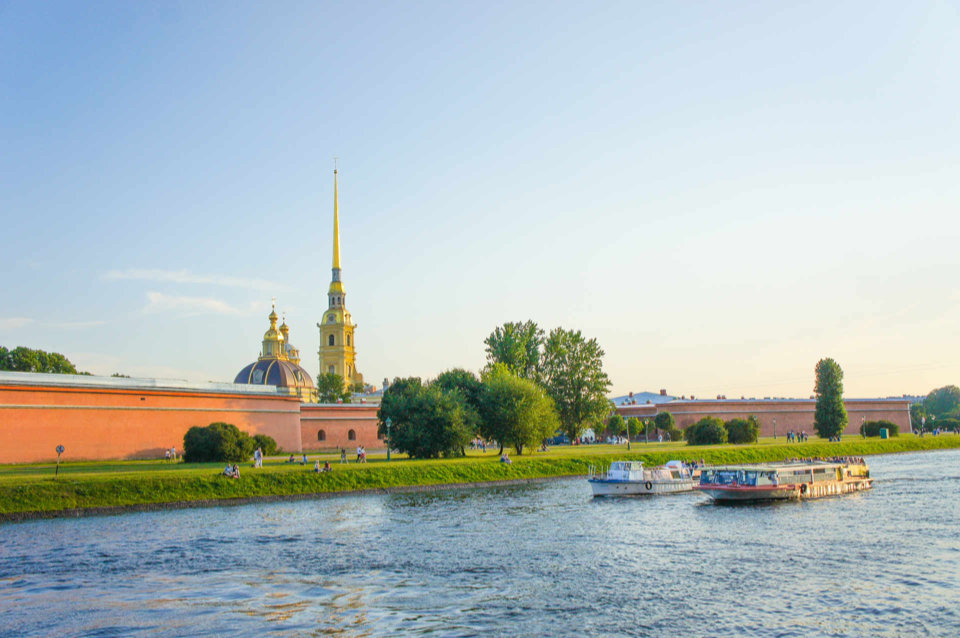Welcome to Saint Petersburg, the most European Russian city. The city is recognized as the cultural capital of Russia. Most city’s guests notice that St Petersburg is the most European among all Russian cities.
FACTS ABOUT SAINT PETERSBURG
- 5, 3 million inhabitants
- 1703 — the year when St Petersburg, Russia was founded
- Peter the Great — Russian Emperor, founder of St Petersburg
- 25th of May — City Day (widely celebrated)
- White nights — an astonishing phenomenon due to northern geographical location — the period in summer when the nights are really white, as the sun almost doesn’t go down.
- The eldest building — Cabin of Peter the Great (built in 1703)
- The highest building — Lakhta Center (462 meters)
- The largest museum — the Hermitage Museum
- The main street — Nevsky Prospect
- 68 parks, 166 gardens
- 50+ universities
- Birthplace of Russian President Vladimir Putin.
FORMER NAMES OF SAINT PETERSBURG
St Petersburg changed its name several times. Originally, the city has been bearing the name of St Petersburg — to honour Saint Peter, the saint patron of Russian Emperor Peter the Great, the founder of the city.
After that, the name changed to Petrograd (which means Peter’s city).
Later Petrograd became Leningrad (Lenin’s city).
And finally, on the 6th September
Locals usually use a short name for St Petersburg, and it is not St Pete — we call it Piter (pronounced as “Peter” in English). And we shortly write SPb.

WHY DO WE CALL SAINT PETERSBURG “VENICE OF THE NORTH”?
The name of Venice of the North reflects St. Petersburg’s aesthetics. As in Venice, numerous rivers, canals and bridges are an important part of the city’s appearance. For example, St Petersburg has:
- 94 rivers and channels. Their total length is about 300 km.
- 30+ islands
- 342 bridges (including 12 drawbridges)
WHY SAINT PETERSBURG IS THE CULTURAL CAPITAL OF RUSSIA
The historic centre of St Petersburg, Russia was recognised as UNESCO heritage for its architectural patrimony. For several centuries, the city was the home for the Russian emperor family, aristocracy and rich merchants who contributed a lot to the development of the city look, culture and patrimony. That is why St Petersburg is often called a museum under the open sky. Certainly, its unique architectural style looks very harmonious.
Furthermore, St Petersburg is a home for a great number of events, from small hand-made markets where local designers sell their unique items to international events like St Petersburg International Economic Forum. Besides, we have:
- 200+ museums
- 100+ theatres
- 30+ festivals every month (cinema, music, science, theatre, food, education, sports, etc.)
Russian Emperor Peter the Great wanted St Petersburg to be a European city. 300 years later, in the 21st century, we still commit to Peter’s will. St Petersburg is the only European-looking city in Russia — but with a Russian soul.
IS SAINT PETERSBURG IN RUSSIA THE ONLY SAINT PETERSBURG IN THE WORLD?
No, it is not.
There’s another St Petersburg — in the USA: it’s a city full of sun, palm trees and beaches.
This US St Petersburg was founded by Russian immigrant Pyotr Dementiev, investor and railway owner. Dementiev wanted to build a railroad crossing Florida from west to east. Eventually, new settlements appeared along the new railway line.
Moreover, if you have read “The Adventures Of Tom Sawyer” by Mark Twain, you probably remember that Tom Sawyer also lived in St Petersburg — in Mississippi!
If you want to know more about St Petersburg, I invite you to pay attention to City Breaks Podcast.
You will find episodes about the history of the city, Russian Emperors, writers, artists — dozens of fascinating stories to appreciate St Petersburg even more.







Ответить